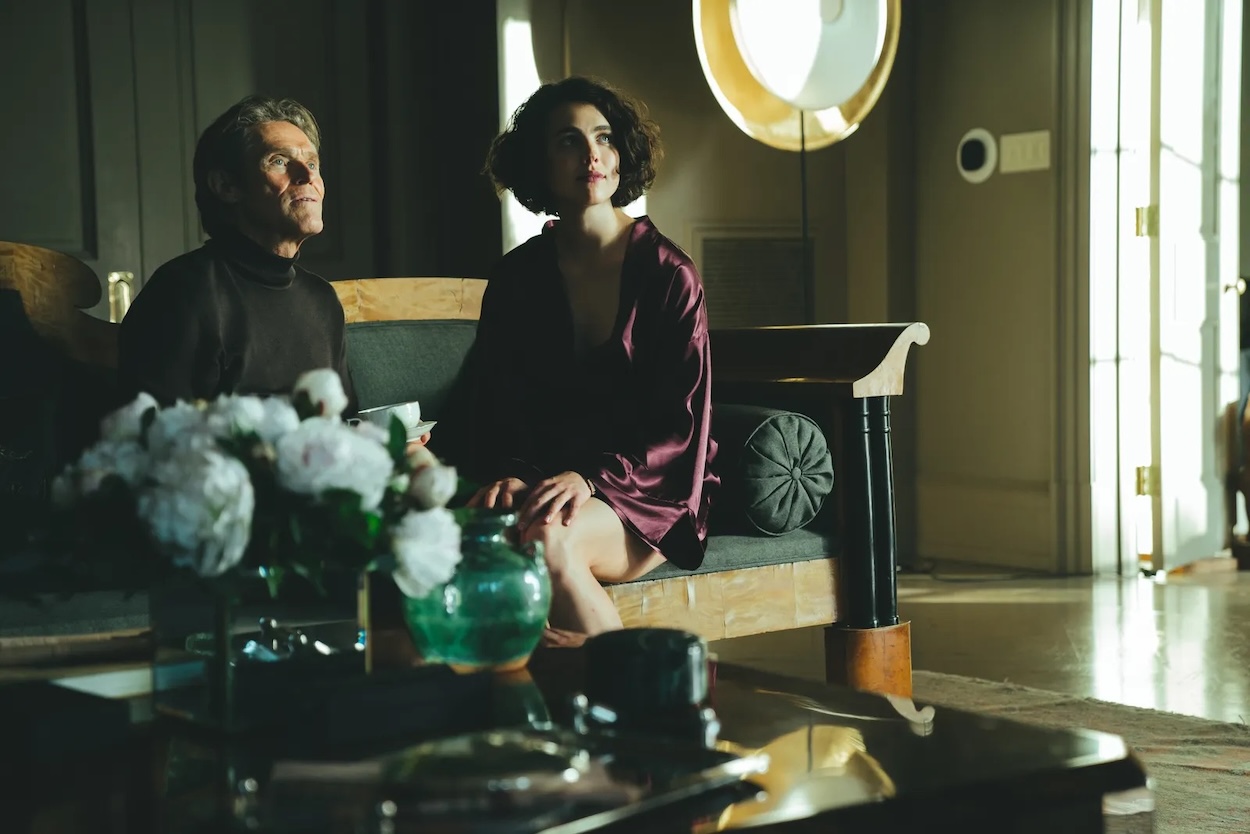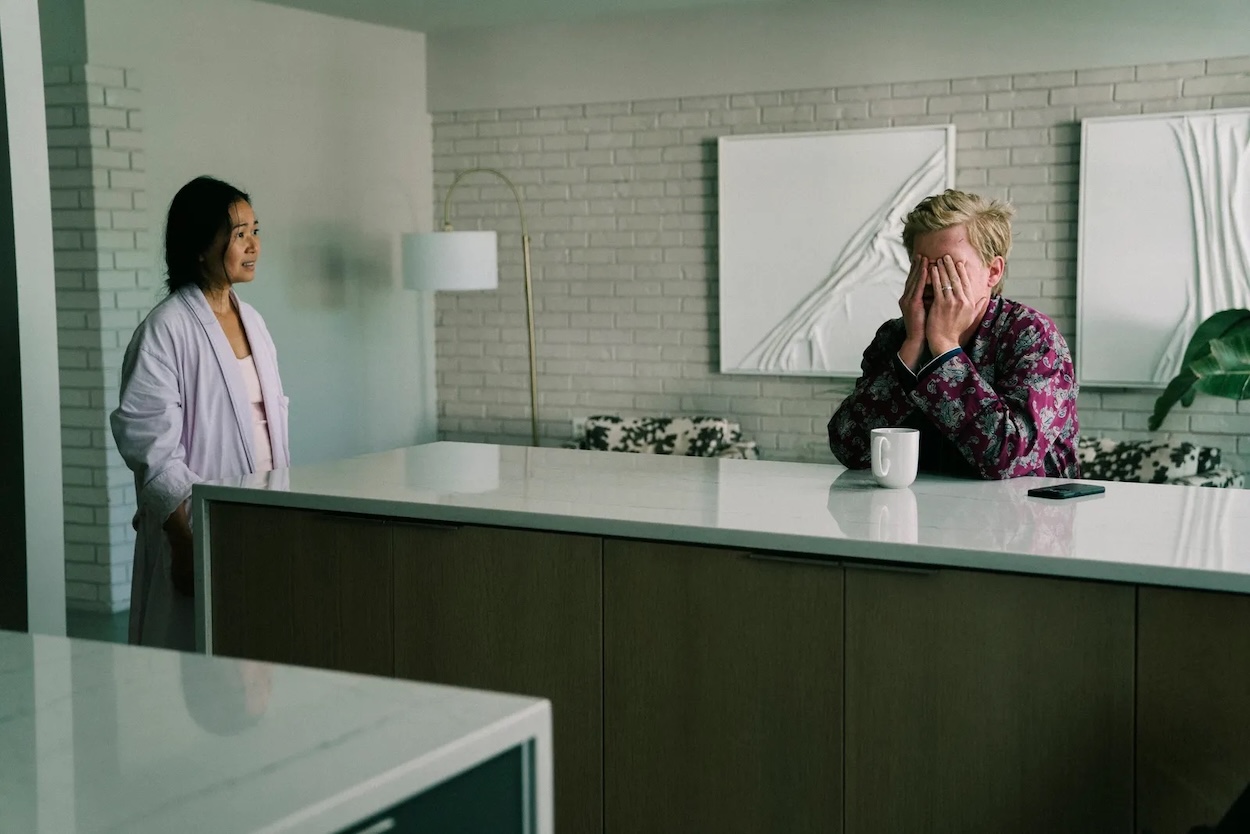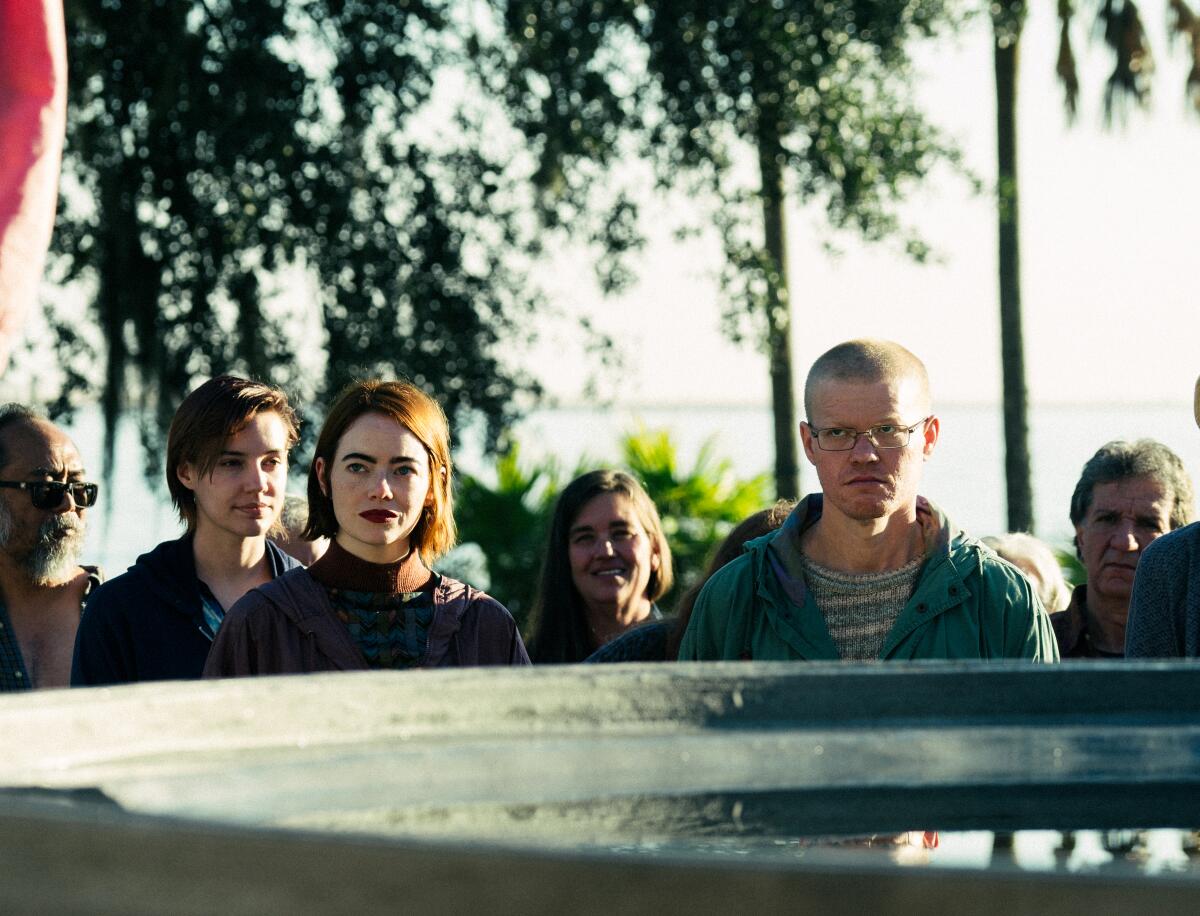Barbie may have dominated scenography discourse among design-minded cinephiles last year, but it’s easy to see why Poor Things scooped the Academy Award for Best Production Design. The eighth feature film by director Yorgos Anthimos follows the Frankenstein-like Bella Baxter, played by Emma Stone, as she embarks on a chaotic tour de force of discovering the wonders and hardships of the universe. That involved crafting wildly imaginative, lavish, and freaky sets in-studio with the help of production designers James Price and Shona Heath that one critic described as “a steam-punk wonderland of garish colors, masked-ball costumes, squawking music, and obviously artificial picture-book backgrounds.”
Lanthimos almost completely reversed course with Kinds of Kindness, his ninth feature film that enjoyed a worldwide release in June. This time, he stepped outside the studio and opted to film on-site, the anthology film’s triptych format unfolding across a variety of locations in New Orleans. “[The process] becomes more of a search instead of trying to find references and ideas and very specifically design something,” Lanthimos told AD. “I very much welcome that it becomes like a game of chance as well—the houses you’re going to find, the hospitals you’re going to find, how those fit in together. It’s a puzzle you have to put together.”
The realistic backdrop suits an engrossing if not unsettling allegory that luxuriates in absurdism as it unfurls the many facets of power and devotion in our relationships—mostly how we seek to escape domination yet often return to control after boundless freedom plunges our lives into chaos. The domestic settings that Lanthimos picked with production designer Anthony Gasparro counter the eerie reality forged through the cast’s off-kilter delivery and random bursts of violence, reminding that oddity and casual cruelty can materialize in the everyday.
In the first story, every decision made by Robert Fletcher is controlled by his boss. Their houses illustrate this—Robert’s is stylish but lacks character, whereas his boss’s lavish 18th-century manor reflects a highly fussy man’s discerning design decisions (a Biedermeier sofa, a Julian Schnabel artwork). The second part, which recounts a man mourning his wife who was lost at sea but mysteriously returns, mostly takes place in a rustic lake house whose humdrum, lived-in ambiance belies the disturbing events that unfold inside. The third story is by far the most visually stunning, centering on two cult members whose libidinous leader resides in a sprawling ‘90s mansion on Lake Pontchartrain. Complete with a drained pool and military barracks, it’s the location that Lanthimos secured first—a dazzling entry into his “sicko” sandbox where kindness is conspicuously absent.
All photography by Atsushi Nishijima, courtesy of Searchlight Pictures.


